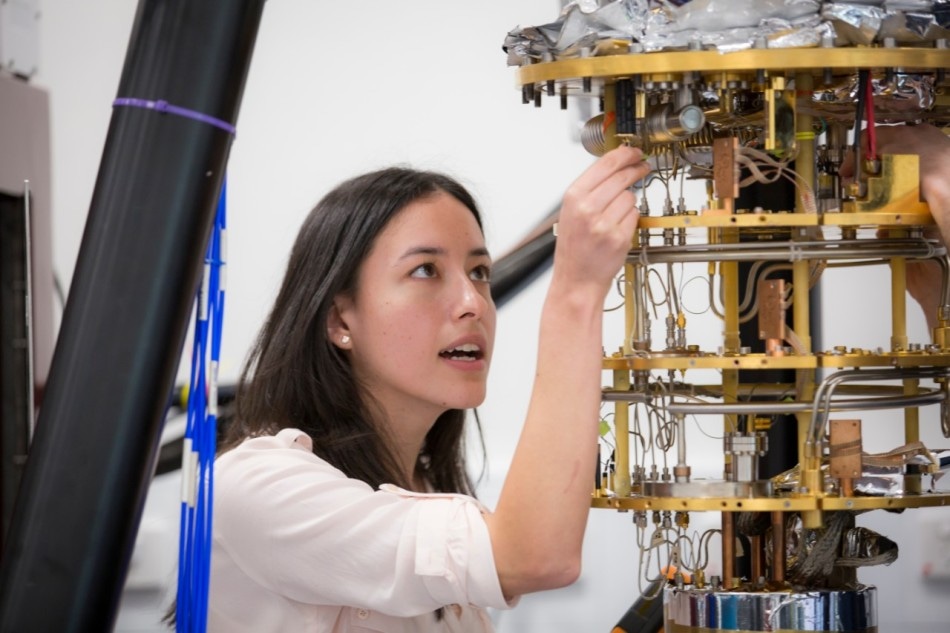Nov 29 2017
A group of researchers at the University of Sydney and Microsoft, together with Stanford University in the US, has developed a small component that is necessary for scaling up quantum computing. The work represents the first practical use of a new phase of matter, first invented in 2006, the so-called topological insulators.
 Lead author of the study, PhD candidate Alice Mahoney, in the quantum science laboratories at the Sydney Nanoscience Hub. Credit: University of Sydney
Lead author of the study, PhD candidate Alice Mahoney, in the quantum science laboratories at the Sydney Nanoscience Hub. Credit: University of Sydney
Beyond the known phases of matter, gas, liquid, or solid, topological insulators are materials that work as insulators in the bulk of their structures but have surfaces that serve as conductors. These materials can be manipulated in order to provide a pathway to construct the circuitry required for the interaction between classical and quantum systems, essential for building a practical quantum computer.
Theoretical work behind the discovery of this new phase of matter won the 2016 Nobel Prize in Physics.
The Sydney group’s component, coined a microwave circulator, works like a traffic roundabout, making sure that electrical signals propagate in only one direction, clockwise or anti-clockwise, as needed. Similar devices are seen in radar systems and mobile phone base-stations, and will be required in large numbers for constructing quantum computers. Until now, a major limitation is that typical circulators are large objects the size of your hand.
This discovery represents the miniaturization of the standard circulator device by a factor of 1000. This has been made by using the properties of topological insulators to reduce the speed of light in the material. This miniaturization leads the way for many circulators to be incorporated on a chip and manufactured in the large numbers that will be required to build quantum computers.
Professor David Reilly, the leader of the Sydney group, explained that the effort to scale-up quantum computing is making breakthroughs in related areas of nanoscience and electronics.
It is not just about qubits, the fundamental building blocks for quantum machines. Building a large-scale quantum computer will also need a revolution in classical computing and device engineering, even if we had millions of qubits today, it is not clear that we have the classical technology to control them. Realising a scaled-up quantum computer will require the invention of new devices and techniques at the quantum-classical interface.
Professor David Reilly, University of Sydney
Lead author of the paper and PhD candidate Alice Mahoney stated: “Such compact circulators could be implemented in a variety of quantum hardware platforms, irrespective of the particular quantum system used."
A practical quantum computer is still a number of years away. Researchers expect to be able to perform currently unsolvable computations using quantum computers that will have applications in various fields such as climate and economic modeling, chemistry and drug design, and cryptography.
Professor David Reilly is director of the University of Sydney’s Microsoft Quantum Laboratory, a multimillion-dollar partnership, which is part of a global effort by Microsoft to build the world’s first practical quantum computer.
Professor David Reilly is director of the University of Sydney’s Microsoft Quantum Laboratory, a multimillion dollar partnership, which is part of a global effort made by Microsoft to develop the world’s first practical quantum computer. This partnership is housed in the Sydney Nanoscience Hub, the University of Sydney Nano Institute’s flagship building.